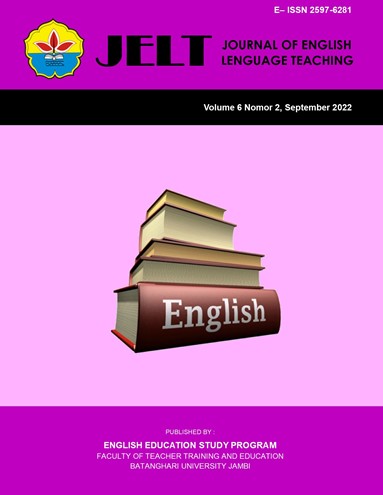The Effect of Using Mind Mapping Technique towards Students’ Ability at Eleventh Grade of Senior High School Number 11 Jambi City
Abstract
The aims of the research is to see whether using mind mapping techniques improves students' writing abilities. This research uses a quantitative approach with a quasi-experimental methodology. A pre-test and post-test are used to collect data in this design. This research took place at SMAN 11 Jambi City. The researcher used a simple random sampling strategy to select students for the sample. Students in XI MIPA 2 were taught using the mind mapping technique, while students in XI MIPA 1 were not. The data gathered for this research was analyzed using the SPSS application. To collect data, the researcher gave a writing exam, which consisted of writing an explanatory text. Students in the experimental class completed a writing test using a mind mapping technique, whereas students in the control class did not use a mind mapping technique. The data in this research is analyzed using normality, homogeneity, and t tests. The following are the research's findings: (1) Normality test results for the experimental class with sig. 0.752 > 0.05 and the control class with sig. 0.510 > 0.05 show that the research's normality test is normally distributed. (2) The homogeneity test findings of the experimental class with sig. 0.678 > 0.05 and the control class with sig. 0.457 > 0.05 in this research are homogeneous. (3) The t-test results for both classes with a sig. 0.000 0.05 indicate that using mind mapping techniques has an effect on students' writing results.
Full Text:
PDFDOI: http://dx.doi.org/10.33087/jelt.v7i2.148
Refbacks
- There are currently no refbacks.

This work is licensed under a Creative Commons Attribution-ShareAlike 4.0 International License.
Publisher: Program Studi Pendidikan Bahasa Inggris
Jl. Slamet Ryadi, Broni-Jambi, Kodepos: 36122, email: prodibahasainggris2020@gmail.com
 This work is licensed under a Creative Commons Attribution-ShareAlike 4.0 International License.
This work is licensed under a Creative Commons Attribution-ShareAlike 4.0 International License.

